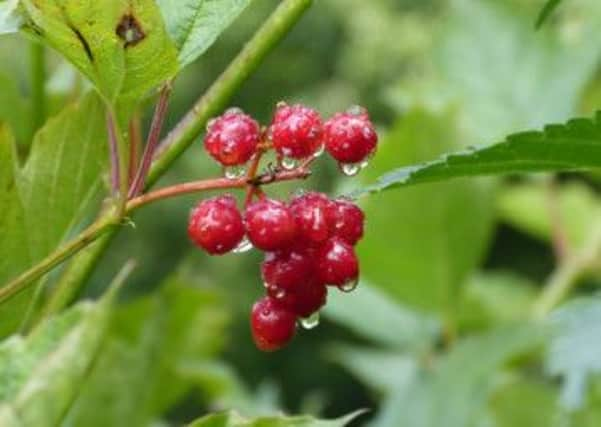Not such a tasty treat


So the gardener has to accept that many of his or her colourful shrubs and trees are going to be come nothing more than avian feeding stations.
Cotoneasters? Blackbirds are drawn to their tiny berries.
Rowans? Waxwings, redwings, fieldfares and even flocks of starlings go crazy for their fruits.
Advertisement
Hide AdAdvertisement
Hide AdYew, while poisonous to many animals, don’t seem to worry birds, and even ivy (particularly late on in the year) and holly have been known to make a meal.
But this... this is a bit of a one-off. Its leaves are vaguely maple-like, and early in the year it produces pretty snowball-shaped, white flowers.
In autumn, however, it’s the turn of waxy, red berries.
And for some strange reason, most birds don’t seem to like them very much, so the fruits tend to remain on the shrub throughout most of the winter.
This is Viburnum opulus ‘Sterile’, seen occasionally in gardens, usually as part of a mixed hedge. Once it was a lot more common, grown for those flowers and berries.
Advertisement
Hide AdAdvertisement
Hide AdIt doesn’t mind moist, moderately alkaline soils, and it will tolerate most soil types, so it became a bit of a fall-back for sites where a lot of shrubs fail to flourish. But give it a well-cultivated soil rich in humus, and it will put on a first-rate show before it finally sheds its leaves.
The acidic fruit is edible in small quantities, but it can be used to make jelly. It is, however, mildly toxic – so perhaps that’s why birds leave it alone unless there is absolutely nothing else on the dining table.
Viburnum opulus has a multitude of names, including Water Elder, European Cranberrybush, Cramp Bark (for its medicinal qualities), Snowball Tree and Guelder Rose. The latter appears to have originated because a popular cultivar originated in the Dutch province of Gelderland.
It can get a bit twiggy, and if left unpruned will spread to become a healthy 10 foot tall and equally as wide, and it can throw out more growth via lengthy underground roots, so it pays to keep it in shape by cutting it back after it’s flowered. Then, of course, you forfeit the berries for that year – although the birds probably won’t mind.